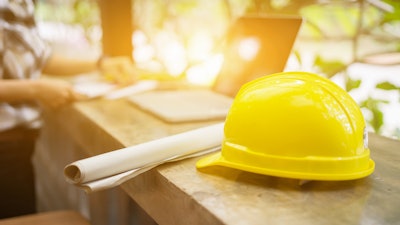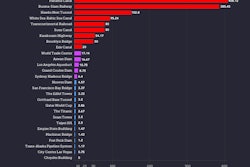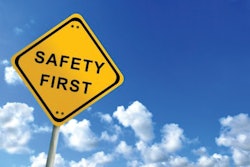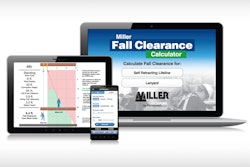
Word has just come down from estimating: They want an updated copy of your safety plan by this afternoon so it can be included with a bid going out by 4:00 p.m. Ever happen to you? If not, it will.
More and more contracts are being awarded to those companies that not only can do the work, but do it safely. This means you have to be prepared. You need a plan, a "safety plan."
Writing a safety plan is not rocket science. If you can follow an outline, have a basic working knowledge of safety and the work your company does, you can do it.
A living document
Every safety plan should be a living document that can be easily adapted to the specific safety and contractual needs of each project. The larger and more complex the project, the larger and more complex the safety plan. Each task in a project should be reviewed to identify known hazards, and your safety plan should provide general guidance for those hazards that are unexpected or unpredictable, what to do about them, who does what during an emergency, how they do it, and when they do it.
Your plan objective should state that your company intends to take any steps necessary to protect its employees, and others, from accidents and hazardous conditions in the workplace. Mention you will follow OSHA regulation "29 CFR 1926, Safety & Health Regulations for Construction." Each section of your safety plan should detail how you are going to provide this protection.
Section 1: The safety representative
Clearly state that the primary safety responsibility for each worker falls on the supervisor in charge of that particular worksite, that he has completed mandatory safety and first aid training, and he has the authority to stop work should a hazardous situation occur.
State that these same foremen or supervisors have the authority to spend money to eliminate imminent danger to workers, others, and property. Also identify the company's safety representative, who is responsible for safety related training and the verification of worker compliance with safety regulations.
Section 2: Medical treatment
Spell out the specifics of who provides medical services, when and where these services will be provided, and how and when emergency personnel shall be summoned.
Section 3: Safety inspections
Clearly state that the supervisor of each worksite shall conduct continuous safety inspections of the work area and that any problems will be immediately noted and corrected.
Section 4: Safety indoctrination
Spell out how new employees are briefed on safety issues prior to going to the worksite. Clearly state how all employees have been issued personal protective equipment (PPE), trained in proper use of PPE, and familiarized with those situations that require its use.
Section 5: Continuous safety training
Detail how and when your company conducts safety training, toolbox talks, etc., including who gives them and when. Also state that every employee is empowered to bring any safety related concern to the attention of management, and indicate how and when management reviews those problems.
Section 6: Housekeeping
Worksite neatness is a prime indicator of your attitude toward safety. Indicate here who is responsible for clean-up and when these activities should occur.
Section 7: Protective equipment
Detail what PPE is issued to each employee. State that each employee is responsible to have her PPE when needed, who is responsible for ensuring proper PPE use, and how to replace worn, damaged, or lost PPE.
Section 8: Accident reports
Each accident, no matter how slight, should be reported to the site foreman or supervisor. It should have its own file that should contain all information about the accident, and what steps were taken to eliminate the hazard. Identify who will conduct the accident investigation, how he can be called, and where the records will be kept.
Section 9: Work zone warning devices
Detail work zone warning devices used by your company and when they should be utilized. List any employee training, such as flagger training, in the use of work zone safety equipment.
Section 10: Fire protection
Identify fire protection equipment provided on site, who is responsible for summoning fire emergency personnel, and that your employees are not expected to fight fires unless they are trained to do so. Include precautions to take when fueling/storing flammable liquids.
Section 11: Equipment inspections
List procedures and schedules for regular inspection, testing, and reconditioning according to manufacturer, or local, state, and federal standards. Detail how deficient equipment is handled. Also indicate who is responsible for inspections, repairs, and where the records of these activities are kept.
Section 12: Control of lockout/tag-out
Discuss your lockout/tag-out procedures, how and when they will be used, and who has the authority to remove a lockout tag. It is important to note that this section does not replace a formal lockout/tag-out policy or program.
Section 13: Hazard communications
Indicate where MSDS forms are filed and who to call with MSDS questions. Identify who provides employees with hazard communications. Refer to your hazard communications plan for specific information and notification procedures when dealing with hazardous or harmful materials.
Section 14: Subcontractors
Spell out that any subcontractors hired or responsible to your company will be required to follow your safety regulations and abide by your safety plan and safety program.
Section 15: Safety regulations
Include a generalized statement that your company will comply with all local, state, and federal safety regulations and that you are committed to following OSHA and other applicable agency regulations.
Section 16: Periodic plan review
Identify who reviews this plan, when it's reviewed (at least annually), and who can approve and/or make changes to this plan. A comprehensive review prior to each project is most desirable.
We're not done yet...
Putting together a safety plan requires some effort. Don't be afraid to ask for help. Any insurance company or agent worth his salt will be happy to review, edit, and eventually endorse your safety plan. Use this guide to craft a safety plan that addresses the type of work your company does, the hazards its employees face, and the steps you are taking to limit the hazards and respond to accidents. It's that simple, and that complicated.
David Bruckheimer is the director of personnel, safety and training for the Pembroke Construction Co., Westwood Contractors, Inc., and Interlock Paving Systems, Inc., Hampton, VA. He can be reached via e-mail at [email protected].



















